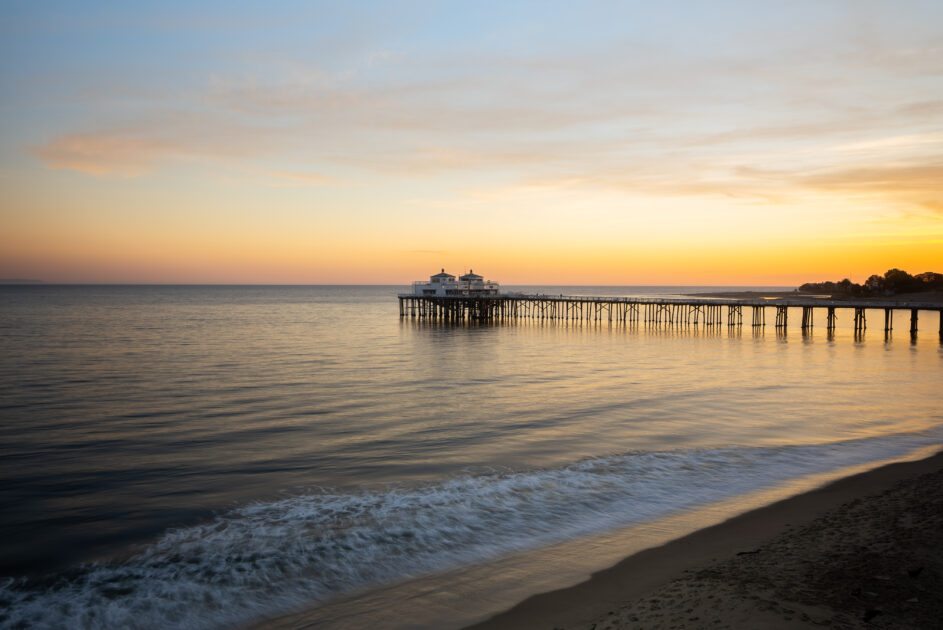The Homes in the Hills
Los Angeles has a cliché of a reputation when it comes to preservation, best summed up by Steve Martin’s architecture tour of the city in his film “L.A. Story”: “Some of these buildings are over 20 years old!” It’s overstatement, yes, but it’s rooted in truth: Historically, Los Angeles has been less concerned with preservation than with what’s new. Over the past few years, that reputation has been slowly changing, as areas of town have come back to life thanks to adaptive reuse: new owners taking old buildings, updating them, and using them for new purposes while still respecting their original architecture. But not every old building in the city gets a dignified adaptation (or even demolition). In Malibu, where the natural world has as much of a say over the lifespan of structures as any developer or preservation pressure group, the scars of fire remain on the hills and in the canyons. And along Solstice Canyon trail in the Santa Monica Mountains, less than five miles from Malibu Beach Inn’s front doors, two of those pockmarks are both clear and important to the town’s history.
Keller House
The Solstice Canyon trail runs alongside a creek for much of its early ascent, but it’s a brief detour across that water that leads hikers to the Keller House, widely considered one of the oldest homes in Malibu. It started as a wooden shack, occupied by squatters just outside the property lines of vineyard owner and entrepreneur Matthew Keller, but Keller’s son acquired the land and the structure after his father’s death. The original version burnt to the ground, but the remnants of its second incarnation – built from stone – still stand. Inside the remaining stone walls is fenced off from the public – possibly to help stave off the graffiti-covered fate of other unguarded ruins around town, like Pacific Palisades’ Murphy Ranch.

Roberts’ House
Just steps shy of the trail’s waterfall is Solstice Canyon’s architectural main event, known as the Roberts’ House. While its name comes from its owner and grocery store magnate Fred Roberts, the reason it remains a visited landmark is that it was designed and built by Paul Williams, the first African-American certified architect in the western United States. And while all that remains is foundation, fireplaces and a very small bomb shelter, it is a rare chance to navigate through essentially a walkable blueprint of a home thought out by one of America’s groundbreaking designers. Owing to the area’s fire danger – and perhaps learning from the example of the Keller House years prior, Roberts was adamant about building the home with fire protection. Williams helped design a full system of water pumps and pools, and he used fire-resistant materials wherever possible. The result was featured in Architectural Digest in 1953 and called the “tropical terrace,” a ranch house where the inside and outside seemed to blend. But no matter how many pools, how many pumps, Mother Nature would not be denied. In 1982, the Dayton Canyon fire spread by the fall Santa Ana winds reduced the home to rubble, leaving behind only some of the concrete and, in a touch of irony, a couple of fireplaces.
What We Lost, What We Gained
Walking around the perimeter of the Keller House and through the remains of the Roberts’ House, visitors get a sense of loss. The Roberts’ House in particular is easy to imagine – stand in the middle of the floor plan, and you can get a feel for what the home might have looked like, how the view out through its front windows must have felt like a world away from the big city. Add in the historic loss of the work of a noteworthy architect, and there’s a somber quiet to the exploration. However, there’s also a great respect to be gained for the natural world. Each year, structures throughout Malibu are in danger of meeting the fate of these two homes. The First Street Foundation’s “Risk Factor” website classifies every home in the town as being at “major risk” for being impacted by wildfires over the next 30 years. Development in Malibu has meant that fewer and fewer homes are surrounding as completely by forest as the Keller and Roberts’ examples, but as we go further into fire season, what remains of those two dwellings serve as a reminder to both admire nature’s beauty and respect its power. In Malibu, those actions can be of equal importance.


























